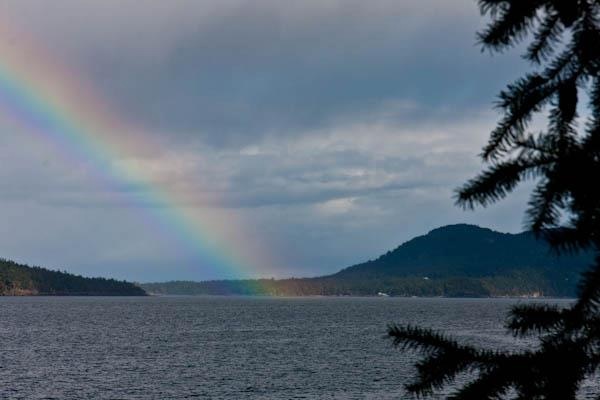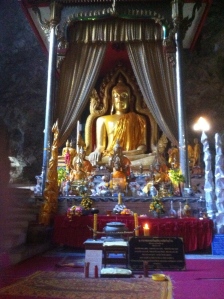52 Weeks Begin Now: Week 27: Peering in the Cracks and Finding Words.
Books Speak to Me: As always, when I have questions, all it takes is for me to open a book that I have found inadvertently, and an excerpt will jump out at me as a life lesson. Such was the case today when I opened the book The Wise Heart (Kornfield, 2008) and a story lept out at me:
In a large temple north of Thailand’s ancient capital, Sukotai, there once stood an enormous and ancient clay Buddha. Though not the most handsome or refined work of Thai Buddhist art, it had been cared for over a period of five hundred years and become revered for its sheer longevity. Violent storms, changes of government, invading armies had come and gone, but the Buddha endured.
At one point, however, the monks who tended the temple noticed that the statue had begun to crack and would soon be in need of repair and repainting. After a stretch of particularly hot, dry weather, one of the cracks became so wide that a curious monk took his flashlight and peered inside. What shone back at him was a flash of brilliant gold! Inside this plain old statue, the temple residents discovered one of the largest and most luminous gold images of Buddha ever created in Southeast Asia…
The monks believe that this shining work of art had been covered in plaster and clay to protect it during times of conflict and unrest. In much the same way, each of us has encountered threatening situation that lead us to cover our innate nobility. Just as the people of Sukotai had forgotten about the golden Buddha, we too have forgotten our essential nature. Much of the time we operate from the portective layer. The primary aim of Buddhist psychology is to help us see beneath this armouring and bring our our original goodness, called our Buddha nature. (pp. 11-12)
Operating from the Protective Layer: The unfortunate thing for so many people is that we have been operating from the protective layer for so long, that we forget who we are at a deeper level. Unfortunately, it takes some fundamental shift in our lives to crack the facade, and to allow light into our inner beauty. Otherwise, it can remain tucked away and out of reach.
Sometimes, the difficulty is not in finding our secret goodness, it is knowing what to do with it once it is found.
It takes risk to emancipate ourselves from the clay, and often ourselves or others will not know how to advise us once we know that we need to become reconnected to our inner purpose. People will suggest that we do “THAT” (our passion) in our spare time because we obviously have to make a living. There will be some confusion by those of us who have not taken the time to stop what we are doing to consider our own cultural domestication, and reconsider our value in the short time that we walk the earth.
Therefore, it is incumbent on us to take care to guide ourselves on this journey and to seek out mentorship of others who have made some significant self-discoveries, and through some personal risk and tenacity, acted on them. They are the ones who have the light to guide us whereas, often (not always), our counterparts, will operate from a place of security, darkness, naivete, fear, or ignorance and may steer us back to that with which they are familiar in their own journeys, and of what they have grown comfortable in their relationships with us. They may not know how to support us, nor be unconditional enough to offer what we may need from them.
Original Goodness: I often ask people this essential question: “If you had nothing to fear or risk, what would you most want?” My answer, when I ask myself this very simple question that sweeps the dirt of resistance off my table cloth before I decide to open my mouth to take a big juicy bite out of life: I want to write. That is it. Plain and simple. I can never truly get past how I might logistically do so as much as I would like to do so, but I am now confident that this is my true calling. It is the place that draws me back over and over again. It is the activity where I am always lost in flow. I am nourished by the experience. And, although I often get recognition and communication for my writing because I sometimes like to share it, the simple act of drawing words out of myself into some meaningful form is reward enough.
Someone might suggest that the act of writing does not a personality make. I would disagree that the art of bringing forth words; sharing and connecting the voices of other writers (as I often like to ground my writing in the rich diversity of other authors); and liberating new and old ideas into new new forms, comes from my soul. Therefore, it is the work of my soul and not my personality. Words leap out of me at various times of the day and night, and I am only satisfied when I have done what they ask me to do. My dissertation, (later published as a book, now in multiple countries, much to my surprise–and a little bit overwhelming as the publication itself unfolded in an interesting and unexpected way), captures my sentiments on the act of creative writing, and I am reminded to go back and re-read it: An Autobiography of the Creative Writing Experience (2009). I am reminded that through this academic research, that creative writing is my essential love: http://www.amazon.ca/An-Autobiography-Creative-Writing-Experience/dp/3639150945 It seems lately, that I need to remind myself to stay the course on my true path.
I wondered about the world as a child through words, and now, I need to bring this full circle and spend the latter part of my life in the centre of that type of work (on my own and with other writers). When I write, I draw on my deepest and rawest core, and shed the protective layer. Through writing, I let myself out and other people in. It is my lens to look inwards and outwards. It is my way way to make sense of my life that remains ahead of me, and the world around me in a meaningful and fulfilling way.
Inner Buddha: When I was in Thailand, I found a temple along the River Kwai called the Wat Tham Khaopoon that was built into the cliffs. We could only access it by climbing hundreds of steps to reach it, and then a few dozen more to get inside of it. There is a middle cave containing stalactites and stalagmites and many remarkable Buddha images. In the quiet calm of the inner cave, I appreciated the worship of its inner Buddha that people took the time to seek out and worship. Just as we seek out the Buddhas, Allah’s, Jesus’, Mohammad’s, etc. around the world, so must we seek out our inner Buddhas where we have opportunities to find them.


